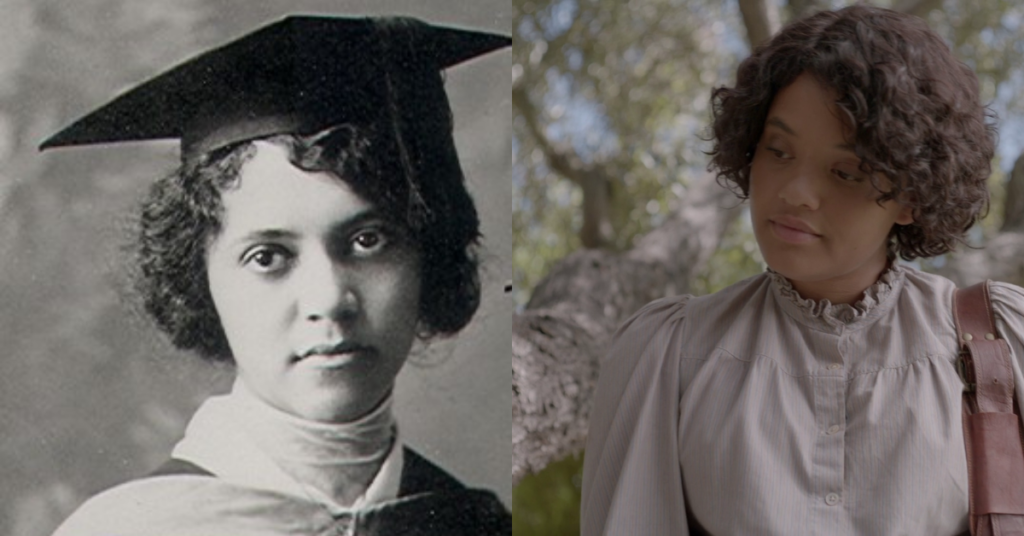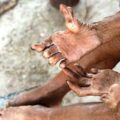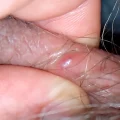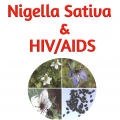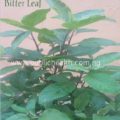By Delthia Ricks
On New Year’s Day in 1922, a scientific paper in an obscure medical journal described a drug that would help revolutionize the treatment of leprosy in Hawaii and beyond. It would also give belated credit to the drug’s developer.
The report, by Harry Hollmann, extolled the therapeutic potential of chaulmoogra oil, originally a folk remedy for leprosy with ancient roots in India and China. For centuries, chaulmoogra tree oil had been known as a nasty medicine — foul-tasting and stomach-wrenching, it was so vile that some people refused to take it. But in his paper, Hollmann named the process that transformed chaulmoogra into a 20th-century leprosy medicine: the Ball Method, a simple injection that freed dozens of people in the Territory of Hawaii from draconian quarantines. The Ball Method wasn’t a cure, but it was as close to one as anybody got by 1922.
It was named for Alice Ball, a Black chemist who had developed her formula in 1915 when she was 23. She had recently earned a master’s in chemistry and was an instructor at the College of Hawaii (now the University of Hawaii) in Honolulu.
Her method became the most widely used treatment for leprosy in the pre-antibiotic years of the 1920s and ’30s. Modified chaulmoogra oil, based on the Ball Method, was distributed worldwide and helped free countless people from isolated leper colonies. (The injections would eventually fall out of favor with the emergence in the late 1930s of sulfa drugs, the first class of antibiotics ever developed.)
For roughly 20 years, when the Ball Method was in vogue, few outside the tiny College of Hawaii knew that a Black woman had developed it, and barely anyone even referred to it as the Ball Method. Ball died suddenly before she could publish her findings. The research she left behind at the college was fair game for people who wanted to claim her breakthrough as their own.
“Two men did steal her work and didn’t give her any credit for her contributions — specifically Arthur Dean, who was president of the College of Hawaii, and Richard Wrenshall, a chemistry professor,” Sibrina Collins, executive director of the Marburger STEM Center at Lawrence Technological University in Michigan, said in a telephone interview.
“They published a 1920 paper in the Journal of the American Chemical Society and a second 1922 paper” — in Public Health Reports — “with her research and failed to mention her or list her contributions,” added Collins, who holds a doctorate in chemistry and has written extensively about Black scientists, including Ball.
Arthur Dean, a chemist with a Ph.D. from Yale, capitalized on Ball’s research by naming it after himself: the Dean Method. He also produced the medication in large quantities at the College of Hawaii, shipping it domestically and abroad. The chaulmoogra venture was his first and only foray into pharmaceutical chemistry.
It would take more than half a century for Ball to receive credit for her work. Hollmann, a physician and bacteriologist, was her first public advocate.
In 1915, Hollmann was the acting assistant surgeon at Hawaii’s Leprosy Investigation Station when he was given a copy of Ball’s master’s thesis, a 44-page analysis of the kava plant’s chemical properties. He contacted Ball and asked if she would tackle another complicated puzzle: chaulmoogra’s mystifying chemistry.
The storied oil is produced by seeds of Hydnocarpus wightianus, a tree native to Asia. When people took it orally, they became nauseated. As an ointment, its viscosity hindered absorption. Injecting the unprocessed oil caused it to ulcerate the skin, further disfiguring those whose skin was already damaged by leprosy.
Ball accepted Hollmann’s challenge and, in a series of arduous but elegant steps, cracked the complex chemical code concealed in the oil. She first identified its two main components: chaulmoogric and hydnocarpic acids. From each she isolated the active constituents, several fatty acids. She chemically modified the fatty acids by converting them to ethyl esters, a form that was water soluble and could be injected without the harm done by the raw oil.
Hollmann tested her treatment on his patients, and he saw that the ethyl esters were bactericidal, capable of killing bacteria. He acknowledged her innovation, coining the term “the Ball Method,” in his 1922 paper, published in the journal Archives of Dermatology and Syphilology.
“After a great deal of experimental work,” Hollmann wrote, “Miss Ball solved the problem for me.”
“Eighty-four patients who have been on the treatment for periods ranging from four years to three months have become bacteriologically negative and free from all lesions of the disease and have been discharged from segregation,” he added.
Hollmann also tested the treatment on two tuberculosis patients; one improved; the other didn’t. Although the medicine was imperfect and didn’t work for everyone, Hollmann was buoyed by its power to set people with leprosy free.
Hansen’s disease, commonly called leprosy, is a slow-growing infection caused by Mycobacterium leprae, a cousin of Mycobacterium tuberculosis, the bacteria responsible for tuberculosis. During the time of Ball’s chaulmoogra research, leprosy was still steeped in stigma, just as it was in the biblical era. Those afflicted were dealt with harshly and forced into permanent isolation, even though leprosy was not easily transmitted. Untreated, it can cause paralysis and become disfiguring. Leprosy damages the nerves and also affects the eyes, nasal passages and skin.
In Hawaii, people with leprosy were shipped out of sight, marooned on Molokai Island for life. Most of the isolated were Native Hawaiians. Until the Ball Method, death was their only relief.
Alice Ball died at 24 on Dec. 31, 1916, in Seattle. She had taken a leave of absence from her teaching position because of an illness that an article in The Pacific Commercial Advertiser, a Honolulu newspaper, attributed to exposure to chlorine gas during a laboratory demonstration. (The college denied that claim.) Her death certificate cites the cause as tuberculosis.
“What a waste that she died in her 20s,” Gregory Petsko, an adjunct professor of bioengineering at Harvard Medical School and emeritus professor of chemistry at Brandeis University in Waltham, Mass, said in a phone interview. “Most chemists don’t hit their stride until their 30s or 40s. Just imagine what she could have done if she had lived.”
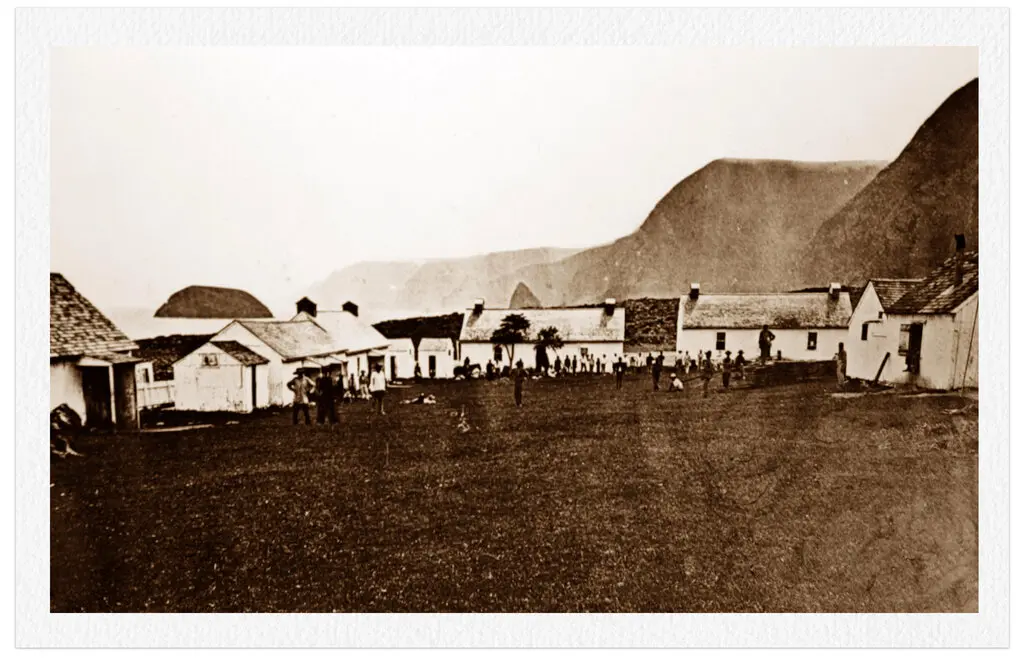
Alice Augusta Ball was born on July 24, 1892, in Seattle, one of four children of James Presley Ball Jr., a lawyer and newspaper editor, and Laura Louise (Howard) Ball, a studio photographer. Alice’s paternal grandfather was James Presley Ball Sr., a noted 19th-century photographer and abolitionist.
On her birth registration and death certificate, Alice is listed as white, although her parents described themselves as Black on their marriage certificate and in U.S. census records. “This may have had less to do with phenotype and more to do with what the Balls thought about themselves culturally,” Quintard Taylor, an emeritus professor of American history at the University of Washington in Seattle and the founder of the history website Blackpast.org, said by phone.
Throughout her secondary education, Ball excelled in science. She was one of the few girls in her 1909 graduating class at Broadway High School to concentrate in its scientific program. She earned two Bachelor of Science degrees from the University of Washington: one in pharmaceutical chemistry in 1912 and the other in pharmacy in 1914.
As an undergraduate, she wrote a paper with the chemist William Dehn, a professor at the University of Washington, based on their research involving a type of reaction called a benzoylation. The paper was published in the prestigious Journal of the American Chemical Society.
It wasn’t until the 1970s that Kathryn Takara, a University of Hawaii professor, and Stanley Ali, who had a personal interest in Ball’s work, dug through the institution’s archives to find evidence of the true developer of the chaulmoogra treatment. In 2019 the London School of Hygiene and Tropical Medicine honored Ball by placing her name in the frieze of its main building. In February 2022, Gov. David Ige of Hawaii declared Feb. 28 Alice Augusta Ball Day.
Twenty-first century scientists marvel at Ball’s ability to hunt down chaulmoogra’s active constituents using her era’s bare-bones technology. “A lot of techniques back then were not as sophisticated as they are now so chemical intuition was very important,” Gregory Petsko said. “To do what she did when she did it was remarkable. She was a very talented chemist.”
This Article First Appeared On The New York Times

